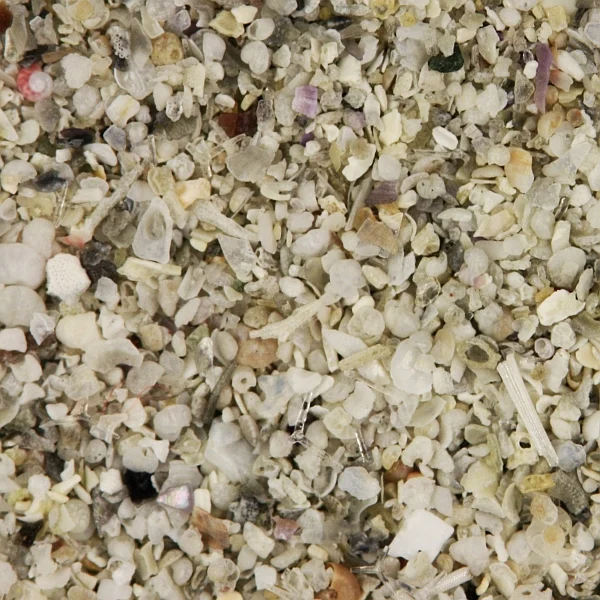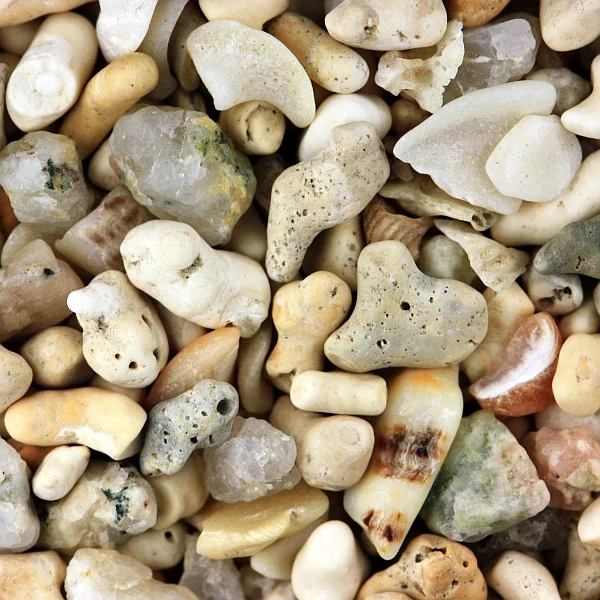It seems to be a widespread misunderstanding that biogenic sand is a tropic phenomenon. It is true that corals prefer warm, clear, and shallow water but corals are not the only organisms that contribute to the formation of biogenic sand. Many so-called coral sands contain no coral reef fragments at all. One of them is a maerl which is not uncommon on the beaches of Ireland, Scotland, and Bretagne.

However, the term ‘maerl’ is probably not well known. Even the Glossary of Geology (1997 edition) doesn’t mention it. It is a sand or gravel (many maerl fragments are actually larger than 2 mm – the upper limit of a sand grain) that is predominantly composed of delicate aragonitic shells of a coralline red algae (Rhodophyta). Two of the most common species on the Ireland’s western coast are Phymatolithon calcareum and Lithothamnion corallioides.
The color of these algae is red or pink but the color vanishes when algae dies. Maerl sand is predominantly white. Red algae has important role in the coral reef ecosystem but they could successfully exist without the help of corals. Maerl is not composed of only red algae. It is interestingly versatile. There are lots of sponge spicules. These are clear siliceous (mostly) structural elements of sponges. They look very cool – just like the logo of Mercedes-Benz. There are also clams, foraminifers, snails, and sea urchins. Maerl is sometimes composed entirely of biogenic fragments. It could be fine- or coarse-grained.
Coralline red algae live in varying depths of water (less than 20 meters below the sea level in NE Atlantic) and get occasionally washed onshore with stronger waves. This sand is not without economic use. It has been used in agriculture (as a soil conditioner), cosmetics, bone surgery, water purification, and even as a food additive.

